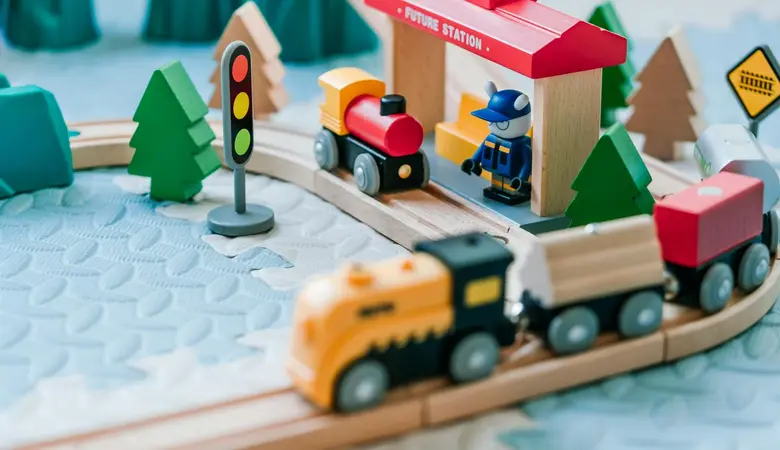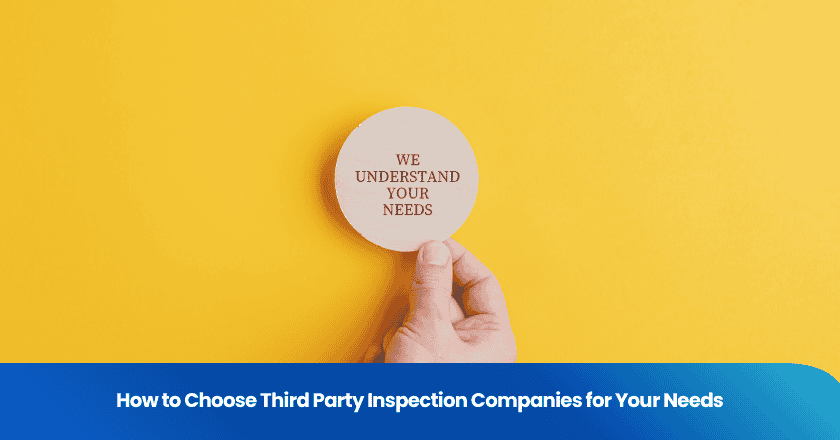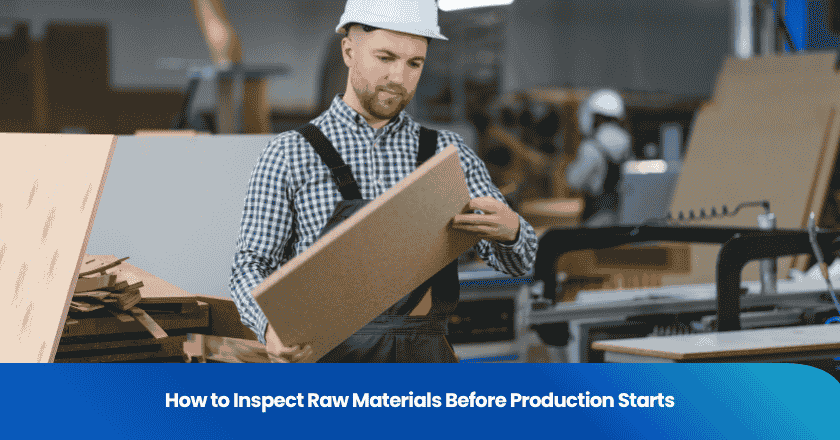
A business looking to source toys safely in 2025 should partner with a reliable china toy quality control supplier. Quality, safety, and compliance shape every step in the modern toy industry. These experts help companies meet strict global standards and avoid costly mistakes. By following proven methods, companies can ensure every toy meets required safety benchmarks.
Key Takeaways
• Partner with a reliable China toy quality control supplier to ensure toys meet strict safety and quality standards in 2025.
• Follow key safety standards like EN71, ASTM F963, and ISO 8124 to protect children and comply with global regulations.
• Request and verify important documents such as test reports, certificates of compliance, and inspection checklists to prove toy safety.
• Choose suppliers with industry experience, valid certifications, detailed inspection reports, and strong local presence for best results.
• Set up clear inspection processes, track supplier performance regularly, and stay updated on changing regulations to maintain product quality.
Supplier Role in Toy Quality
Importance in 2025
Toy safety and quality have become more important than ever in 2025. Global regulations continue to evolve. Parents and guardians expect toys to meet strict safety standards. A china toy quality control supplier helps companies keep up with these changes. They play a key role in protecting children from unsafe products. These suppliers also help businesses avoid recalls and legal issues.
Note: The toy industry faces increased scrutiny from both local and international authorities. Companies that ignore quality control risk damaging their reputation and losing market access.
A china toy quality control supplier brings expertise in testing, inspection, and compliance. They understand the latest requirements for materials, design, and labeling. Their involvement ensures that every toy meets the expectations of both regulators and consumers.
Key Responsibilities
A reliable china toy quality control supplier takes on several important tasks. Their main responsibilities include:
• Product Inspection: They check toys at different stages of production. This includes raw materials, semi-finished goods, and finished products.
• Testing for Safety: They conduct tests for hazards such as sharp edges, toxic substances, and small parts.
• Documentation Review: They verify that all documents, such as test reports and certificates, are accurate and up to date.
• Compliance Monitoring: They track changes in regulations and update processes as needed.
• Communication: They provide clear feedback to manufacturers and buyers about any issues found.
These responsibilities help companies deliver safe, high-quality toys to the market. By working closely with a china toy quality control supplier, businesses can build trust with customers and regulators.
Define Quality Requirements
Safety Standards
Toy safety standards protect children and ensure products meet legal requirements. In 2025, companies must follow both international and local regulations. These rules cover materials, design, and labeling. Suppliers check for hazards such as sharp edges, toxic chemicals, and small parts that could cause choking.
Key safety standards include:
• EN71: This European standard tests for mechanical, physical, and chemical safety.
• ASTM F963: This American standard covers toy safety, including flammability and heavy metals.
• ISO 8124: This international standard sets guidelines for toy safety worldwide.
• CE Marking: This mark shows compliance with European safety rules.
Tip: Always confirm which standards apply to your target market before production begins. Regulations may change each year.
Suppliers use specialized equipment to test toys. They check for lead, phthalates, and other harmful substances. They also test for durability and age-appropriate design. These steps help companies avoid recalls and protect their reputation.
Documentation
Accurate documentation proves that toys meet safety standards. Suppliers prepare and organize several key documents during the quality control process.
Essential documents include:
• Test Reports: These show results from safety and performance tests.
• Certificates of Compliance: These confirm that toys meet specific standards.
• Material Safety Data Sheets (MSDS): These list the chemicals used in each toy.
• Inspection Checklists: These track each step of the inspection process.
A sample documentation table:
| Document Type | Purpose | Who Prepares It |
|---|---|---|
| Test Report | Shows test results | Testing Laboratory |
| Certificate of Compliance | Confirms standard compliance | Supplier/Inspector |
| MSDS | Lists chemical information | Manufacturer |
| Inspection Checklist | Tracks inspection steps | Quality Inspector |
Organized documentation helps companies respond quickly to audits or customer questions. It also supports smooth customs clearance and market entry.
Find China Toy Quality Control Supplier
Where to Search
Many companies look for a china toy quality control supplier in regions known for toy manufacturing. Shantou, Yiwu, Huizhou, and Dongguan stand out as the main hubs in China. Each city has a strong reputation for producing toys at scale. Shantou specializes in plastic toys and electronic toys. Yiwu is famous for its vast wholesale markets and variety of toy products. Huizhou and Dongguan focus on both traditional and innovative toys, often using advanced manufacturing techniques.
A company can start by visiting trade fairs and exhibitions in these regions. These events bring together manufacturers, suppliers, and quality control experts. Online business directories and industry associations also provide lists of qualified suppliers. Many companies use third-party inspection companies to help identify reliable partners. These organizations often have local offices in the main toy-producing cities.
Tip: Visiting factories in person helps companies understand the production environment and quality control processes. Face-to-face meetings build trust and clarify expectations.
Selection Criteria
Choosing the right china toy quality control supplier requires careful evaluation. Companies should look for suppliers with experience in the toy industry and a clear understanding of international safety standards. The most important certifications include CE, ISO, EN71, and ASTM. These certificates show that the supplier follows strict safety and quality guidelines.
A good supplier provides detailed inspection reports and clear documentation. They should have a team of trained inspectors who know how to test for hazards like sharp edges, toxic substances, and small parts. Companies should ask for sample reports to check the supplier’s attention to detail.
The table below shows key criteria for selecting a supplier:
| Criteria | Why It Matters |
|---|---|
| Experience in Toy Industry | Ensures knowledge of toy-specific risks |
| International Certifications | Proves compliance with global standards |
| Detailed Reports | Shows thorough inspection process |
| Local Presence | Allows quick response to issues |
| Third-Party Partnerships | Adds extra layer of quality assurance |
A company should also check if the supplier works with third-party inspection companies. These partnerships add credibility and help maintain high standards. Regular communication with the supplier ensures that everyone understands the requirements and deadlines.
Note: Always verify the authenticity of certifications and reports. Some suppliers may claim to have certificates that are not valid or up to date.
By following these steps, companies can find a china toy quality control supplier who meets their needs and helps them deliver safe, compliant toys to the market.
Evaluate and Set Up Processes
Check Certifications
A company should always start by checking the certifications of a china toy quality control supplier. Certifications such as ISO, EN71, and ASTM show that the supplier understands global safety standards. These documents prove that the supplier uses approved methods and follows strict guidelines. A team can request copies of these certificates and verify them with the issuing organizations. This step helps prevent problems with fake or expired documents.
Tip: Always ask for the most recent certificates. Regulations change often, so up-to-date documents matter.
Review Reports
Sample reports give insight into the supplier’s inspection process. A company should ask for several recent reports. These documents show how the supplier tests toys for hazards and checks for compliance. Teams can look for clear descriptions, photos, and test results. A good report explains each step of the inspection and lists any issues found. Reviewing these reports helps a company judge the supplier’s attention to detail and ability to spot problems.
| Report Feature | What to Look For |
|---|---|
| Test Descriptions | Clear steps and methods |
| Photos | Evidence of actual inspections |
| Results | Pass/fail and detailed findings |
| Recommendations | Actions for any issues |
Inspection Setup
Setting up inspection protocols ensures that every toy meets safety standards. A company should work with the supplier to create a checklist for each inspection. This list covers materials, assembly, labeling, and packaging. On-site audits help confirm that the supplier follows the agreed process. Teams can visit factories or use video calls to watch inspections in real time. Clear communication channels, such as regular meetings or instant messaging, keep everyone updated on progress and issues.
A china toy quality control supplier with strong processes and open communication helps companies avoid costly mistakes. Regular audits and clear protocols build trust and improve product safety.
Monitor and Ensure Compliance
Performance Tracking
Companies must track the performance of their quality control partners to ensure consistent results. They often use key performance indicators (KPIs) to measure success. Common KPIs include defect rates, inspection pass rates, and response times. Teams can set up regular reviews to compare these metrics over time. A simple table helps organize and visualize this data:
| KPI | Target Value | Actual Value | Status |
|---|---|---|---|
| Defect Rate (%) | < 1.0 | 0.8 | On Track |
| Inspection Pass Rate | > 98 | 99 | On Track |
| Response Time (hrs) | < 24 | 20 | On Track |
Tracking these numbers helps companies identify trends and address issues quickly. Regular feedback sessions with the china toy quality control supplier support continuous improvement.
Regulatory Updates
Toy safety regulations change frequently. Companies must stay informed about new rules in their target markets. They can subscribe to industry newsletters or join trade associations for updates. Quality control suppliers often share regulatory news with their clients. Teams should review these updates and adjust inspection protocols as needed.
Tip: Assign a team member to monitor regulatory changes and communicate important updates to all stakeholders.
Issue Management
Problems can arise during production or inspection. Companies need a clear process to manage these issues. First, they should document the problem with photos and detailed notes. Next, they must notify the supplier and discuss possible solutions. Teams can use a simple checklist to guide the process:
• Identify and record the issue
• Notify the supplier
• Investigate the root cause
• Agree on corrective actions
• Follow up to confirm resolution
Quick and transparent issue management helps maintain product quality and trust between partners.
Working with a china toy quality control supplier involves several clear steps. Companies define quality requirements, select qualified partners, and set up inspection processes. They monitor performance and stay updated on regulations. Diligence and strong communication help maintain compliance. Reliable partnerships ensure toys meet safety standards in 2025.
Companies that follow these steps can source toys that are safe, reliable, and ready for global markets.
FAQ
What documents should a company request from a toy quality control supplier?
A company should request test reports, certificates of compliance, material safety data sheets, and inspection checklists. These documents help prove that toys meet safety and quality standards.
How often should inspections take place during toy production?
Inspections should occur at key stages: before production, during production, and after production. Regular checks help catch problems early and ensure consistent quality.
Why do international certifications matter for toy quality control suppliers?
International certifications, such as ISO or EN71, show that a supplier follows recognized safety and quality standards. These certificates help companies meet legal requirements in different markets.
Grow your business with TradeAider Service
Click the button below to directly enter the TradeAider Service System. The simple steps from booking and payment to receiving reports are easy to operate.



